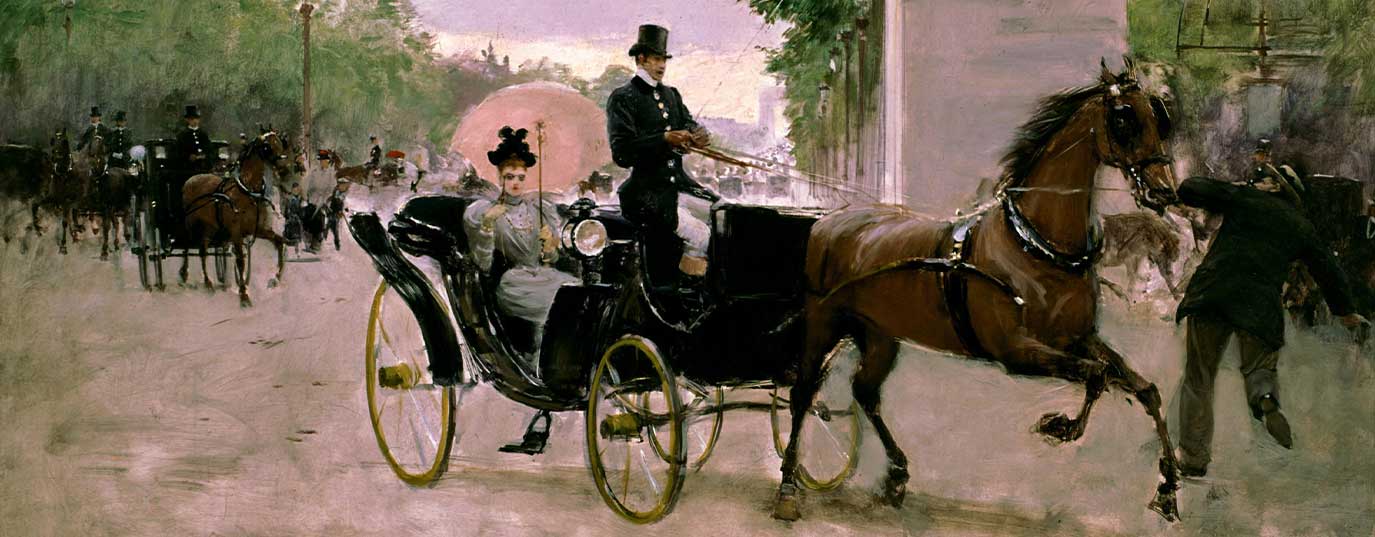How mobility is evolving toward sustainability
From designing cities for cars, to the new sustainable paradigm, how urban mobility has gone about changing in just a few decades.
Transport in cities has evolved considerably over the past 50 years. From the exponential rise in private vehicles and expansion of the road network, to the present emphasis on reducing the use of cars and pushing for sustainable urban mobility, how has the way in which we move changed in the spaces we inhabit?
What will I learn from this article?
- History of urban mobility
- Urban mobility centered on cars
- From private vehicles to people
- Sustainable urban mobility
A short history of urban mobility development
As you stroll through a typical medieval town in Europe, littered with surprisingly narrow streets by today’s standards, a tourist guide might explain a curious fact: the measurement unit for deciding on their height and width (people often crossed between houses on different sides of the street by beams above, arches or bridges) was the size of a rider and their horse. If the rider could spread their arms without touching the walls on either side, the measurement was correct.
 The way in which we move about has always determined the development of towns and cities, as well as our social and economic progress. At the end of the day, the history of transport is as a result of innovations and structural changes that aim to deliver us quicker and further to our destinations.
The way in which we move about has always determined the development of towns and cities, as well as our social and economic progress. At the end of the day, the history of transport is as a result of innovations and structural changes that aim to deliver us quicker and further to our destinations.
A good starting point in explaining the development of urban mobility is the internal canal networks many cities – such as Venice, Amsterdam and Hamburg - began to build in the 15th Century and which allowed urban river traffic between their different quarters.
The development of an internal canal system largely reduced the costs of moving merchandise and stimulated industrial development and the first throes of globalization.
Similarly, the progress with railway networks in the 19th C. further stimulated economic development and allowed large numbers of people to move around relatively rapidly and cheaply.
In the 20th C., the motor vehicle, and road and motorway construction, as well as the arrival of air transport, incentivized international passenger and goods transport. Undoubtedly, the explosive growth in motor vehicles in developed countries had an indisputable impact on the design and functioning of towns and cities; influential to the point where cars seemed to become more important than people. Thankfully, sustainable urban mobility is driving a new paradigm.
“The explosive growth in motor vehicles in developed countries had an indisputable impact on the design and functioning of towns and cities”
Urban mobility centered on cars
The first throes of urban economic growth enabled families with greater purchasing power. In many western cities, cars began to swarm the streets. The increase in motorized vehicle traffic obliged public institutions to act: they needed to prepare the cities for cars.
 The effect? A large part of urban land available was dedicated to building roads and parking facilities, etc. As this occurred, investment in public transport declined.
The effect? A large part of urban land available was dedicated to building roads and parking facilities, etc. As this occurred, investment in public transport declined.
In London, for example, the extensive tramway system was scrapped to provide more space for cars. Policies favoring car use were promoted over more sustainable urban mobility modes.
Indeed, to accommodate the large presence of cars in London, the city planned an extensive network of urban motorways, but it was never realized. Construction on the first section of one of the motorways provoked such a public storm that the Tories governing Greater London Council were voted out in 1973. The new administration promised to end the building of large highways in London, under the slogan ‘Homes Before Roads’.
Likewise, the consequences of growing car use began to be noticed, not only in terms of greater traffic congestion, but also due to increasing air pollution, traffic accidents and, of course, concerns over CO2 emissions.
From private vehicles to people
To deal with the problems of increasing motor vehicle traffic in cities, the focus switched to the best way to move around. The obvious solution was to promote the use of public transport systems. Since buses, trams, trains and subways use limited city space much more efficiently than private vehicles, they can accommodate a much larger number of people per journey.
The solution was to incentivize more sustainable forms of urban mobility to encourage citizens to resort less to their own vehicles. A measure that would help improve both traffic flow and people’s health.
This change in perspective was generally accompanied by growing restrictions on car use: parking clampdowns in city centers, restricted access to counter high levels of air pollution, etc.
Sustainable urban mobility based on the quality of life of citizens
This third phase further extended the concept of sustainable mobility and posed questions such as: “Is your journey really necessary?”. The debate centered on the fundamental objectives of transport policies. People moved constantly around the city to access goods and services. But what if those goods and services were more accessible and did not need us to go get them?
Paris is now also known for its 15-minute city model. This system reduces the space for cars and restructures the transport model around having the most necessary goods within a radius of no more than 5-6 kilometers from home.
People can walk to school and work and will have a health center, supermarket and library nearby. These are cities based on sustainable social models that breathe new life into the word “local”. Places conceived to live in rather than travel through.
Less transport, whether private or public, also contributes to a significant reduction in noise pollution, greenhouse effect gases and CO2. As such, promoting sustainable urban mobility is also synonymous with fighting climate change.
Sources:







